| UPDATE 11/01/23 – The Synology DS723+ NAS Drive has now been RELEASED! You can find our reveal and before you buy guide below:
Synology DS723+ NAS Review – HERE |
The future of Network Attached Storage (NAS) has arrived with the unveiling of Synology’s latest offering, the DS723+, at the CES 2023 event. This advanced NAS system represents a major evolution from its predecessor, the DS720+, with a number of improvements and a few compromises. At the heart of the DS723+ is an AMD Ryzen R1600 CPU, which is designed to maximize performance rather than focus on transcoding capabilities like the Intel Celeron J4125 CPU found in the DS720+. As a result, the DS723+ can only transcode 1080p videos, compared to the 4K transcoding capabilities of the DS720+. However, the DS723+ does come with 4 virtual cores, which serve as a virtual 4-core processor and result in an overall performance increase of about 50%. This increase will be particularly noticeable when using virtual machines, Docker, and 10GBE, but may not make a significant difference in other tasks.
One major limitation of the DS723+ is its lack of support for remote access to 4K videos, including 4K CCTV and Synology photos. This may be a disappointment for users who rely on these features. Both models come with NVMe slots, but the DS723+ has improved M.2 slots with much higher speeds. The old model’s M.2 slots had a maximum speed of 500MB/s, while the new model can reach speeds of up to 2GB/s. The DS720+ could only use its NVMe slots for caching, but the DS723+ allows for both caching and storage. However, only Synology M.2 drives are allowed for use as storage volumes. One area where the DS723+ truly excels is in its expansion capabilities. The DS720+ did not have a PCIe slot for a 10GBE upgrade, while the DS723+ comes with a PCIe expansion slot specifically for a 10GBE card. This allows for faster data transfer speeds, with the DS723+ achieving a read speed of 1179.75MB/s and a write speed of 772.84MB/s in a 10GBE test with an M.2 NVMe SSD.
Both models also support the DX517 expansion unit, which allows for the addition of 5 more drives. The DS720+ has two USB ports, while the DS723+ only has one. Additionally, the DS723+ has a higher noise level and consumes more power than its predecessor. In conclusion, the DS723+ is a powerful and feature-rich NAS system that is well worth considering for those in need of a high-performance storage solution. Its advanced processor, expansion capabilities, and energy efficiency make it a standout choice, and it is sure to be a popular option for users looking to upgrade from the DS720+ or other NAS systems. While it does have a few limitations, such as reduced transcoding capabilities and the lack of 4K remote access, these may not be dealbreakers for all users. Ultimately, the decision of whether to upgrade to the DS723+ will depend on an individual’s specific needs and priorities.
Synology DS723+ expected price based on nasstore in EU is 399.00€ (399.00€ incl. VAT)
Synology DS723+ specs
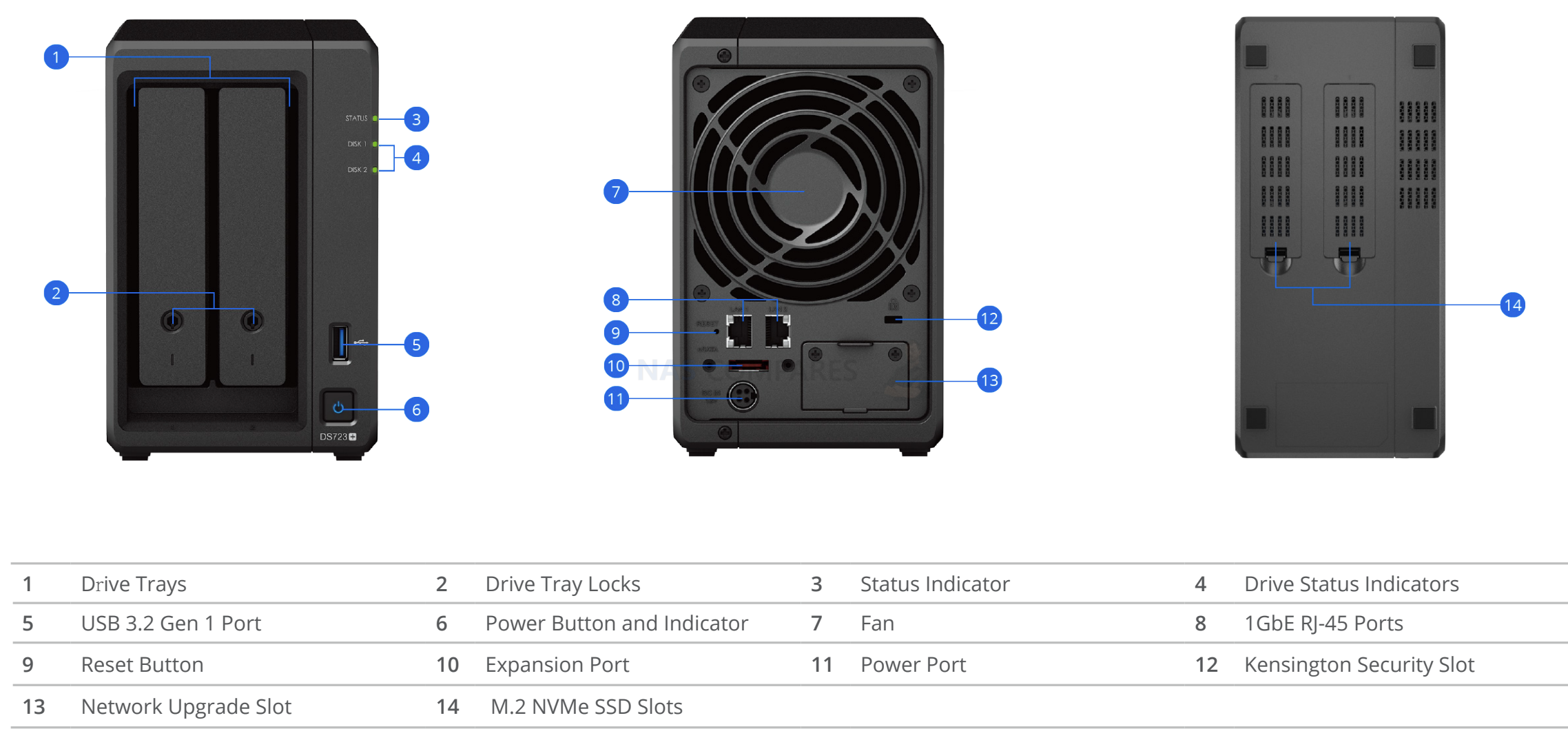
|
CPU
|
CPU Model | AMD Ryzen R1600 |
|---|---|---|
| CPU Quantity | 1 | |
| CPU Architecture | 64-bit | |
| CPU Frequency | 2-core 2.6 (base) / 3.1 (turbo) GHz | |
| Hardware Encryption Engine (AES-NI) | ||
|
Memory
|
System Memory | 2 GB DDR4 ECC |
| Memory Module Pre-installed | 2 GB (2 GB x 1) | |
| Total Memory Slots | 2 | |
| Maximum Memory Capacity | 32 GB (16 GB x 2) | |
| Notes |
|
|
|
Storage
|
Drive Bays | 2 |
| Maximum Drive Bays with Expansion Unit | 7 (DX517 x 1) | |
| M.2 Drive Slots | 2 (NVMe) | |
| Compatible Drive Type* (See all supported drives) |
|
|
| Hot Swappable Drive* | ||
| Notes |
|
|
|
External Ports
|
RJ-45 1GbE LAN Port* | 2 (with Link Aggregation / Failover support) |
| USB 3.2 Gen 1 Port* | 1 | |
| eSATA Port | 1 | |
| Notes |
|
|
|
PCIe
|
PCIe Expansion | 1 x Gen3 x2 network upgrade slot |
|
File System
|
Internal Drives |
|
| External Drives |
|
|
|
Appearance
|
Size (Height x Width x Depth) | 166 mm x 106 mm x 223 mm |
| Weight | 1.51 kg | |
|
Others
|
System Fan | 92 mm x 92 mm x 1 pcs |
| Fan Speed Mode |
|
|
| Brightness Adjustable Front LED Indicators | ||
| Power Recovery | ||
| Noise Level* | 20.7 dB(A) | |
| Scheduled Power On / Off | ||
| Wake on LAN / WAN | ||
| Power Supply Unit / Adapter | 65 W | |
| AC Input Power Voltage | 100V to 240V AC | |
| Power Frequency | 50/60 Hz, Single Phase | |
| Power Consumption | 21.07 W (Access) 8.62 W (HDD Hibernation) |
|
| British Thermal Unit | 71.85 BTU/hr (Access) 29.39 BTU/hr (HDD Hibernation) |
|
| Notes |
|
|
|
Temperature
|
Operating Temperature | 0°C to 40°C (32°F to 104°F) |
| Storage Temperature | -20°C to 60°C (-5°F to 140°F) | |
| Relative Humidity | 5% to 95% RH | |
|
Certification
|
|
|
|
Warranty
|
3-year hardware warranty, extendable to 5 years with Extended Warranty Plus | |
| Notes |
|
|
|
Environment
|
RoHS Compliant | |
|
Packaging Content
|
|
|
|
Optional Accessories
|
|
|
Tell me more about this DS723+ CPU
The AMD Ryzen R1600 and the Intel Celeron J4125 are both low-power desktop processors, but they have some key differences in terms of performance and features. The Celeron J4125 has more cores, it has 4 cores and 4 threads, compared to the Ryzen R1600’s 2 cores and 4 threads, so it will generally be better at handling multithreaded workloads and should have better performance in tasks that can take advantage of multiple cores. The base clock speed of the Celeron J4125 is also lower than that of the Ryzen R1600, at 2.0GHz vs 2.6GHz. However, the Celeron J4125’s burst frequency is higher, at 2.7GHz compared to 3.1GHz for the Ryzen R1600. Additionally, Celeron J4125 comes with Intel UHD Graphics 600, while Ryzen R1600 don’t have any built-in GPU, this would make the Celeron J4125 a better choice if you plan to use the system for tasks that require a GPU. In terms of memory support, both processors support DDR4 memory, but the Celeron J4125 does not support ECC memory, whereas the Ryzen R1600 does. ECC memory can detect and correct certain types of data corruption, so it can be a useful feature for servers or other systems that require high levels of data integrity.
In summary, the AMD Ryzen R1600 has higher clock speeds and does support ECC memory but the Intel Celeron J4125 has more cores and integrated GPU and it will generally be better suited for multithreaded workloads, while the Ryzen R1600 might be better for tasks that rely heavily on single-threaded performance, and more suitable if you’re planning on having ECC memory support.
Can I upgrade RAM on DS723+?
Yes, you can use official RAM DDR4 ECC SODIMM: D4ES02-4G/D4ES02-8G/D4ES01-16G or try unofficial memory from Crucial, Samsung etc.

Do I need NVMe cache?

Whether or not you need NVMe cache on a Synology NAS depends on the specific use case and performance requirements of your setup. NVMe cache can provide faster read and write speeds for frequently accessed data, which can be beneficial for applications that require high performance, such as virtualization or video editing. However, if your NAS is mostly used for data storage and infrequent access, then an NVMe cache may not be necessary.
It would be worth looking into if you’re experiencing slow access, and if Synology NAS support NVMe cache.
These NVMe M.2 SSD slots are capped at 2GB/s (Gen3 x1) per slot. This is why IOPS are more important then SSD speed when you look for upgrades.
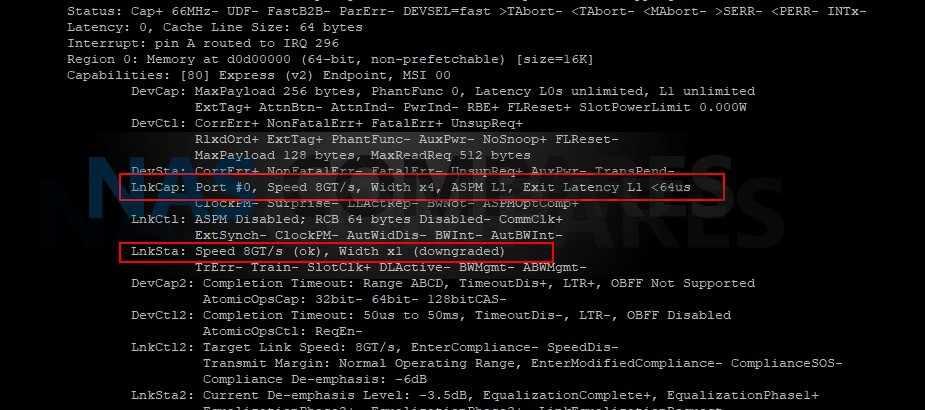
When choosing NVMe for caching you need to look at reliability ratings such as DWPD/MTBF. Here are a few on the list
https://nascompares.com/answer/nvme-m-2-list-with-endurance-dwpd-mtbf/
Caching means a lot of read and write operations, unlike regular storage situation.
You would need to look at models with 0.5DWPD and above
970 pro – 0.66DWPD
Synology SNV3400 – 0.68DWPD
Seagate FireCuda 510 – 0.7 DWPD
Seagate IronWolf 525 – 0.7 DWPD
Seagate Firecuda 530 – 0.7 DWPD
Seagate PS5 Game drive – 0.7 DWPD
Seagate FireCuda 520 -0.9 DWPD
WD Red SN700 – 1.0DWPD
How does it look inside DS723+?
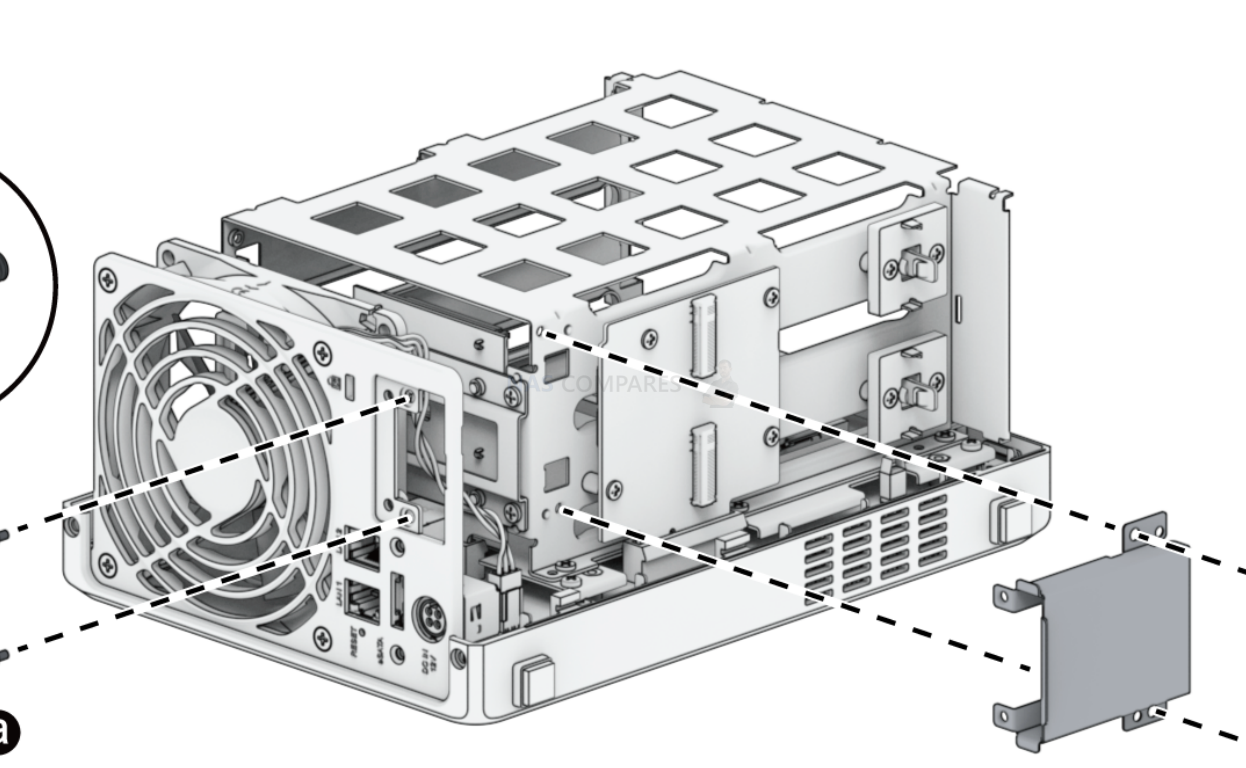
DS720+ vs DS723+. What has changed?
| CPU | ||
| CPU Model | Intel Celeron J4125 | AMD Ryzen R1600 |
| CPU Quantity | 1 | 1 |
| CPU Architecture | 64-bit | 64-bit |
| CPU Frequency | 4-core 2.0 (base) / 2.7 (burst) GHz | 2-core 2.6 (base) / 3.1 (turbo) GHz |
| Hardware Encryption Engine (AES-NI) | ||
| Memory | ||
| System Memory | 2 GB DDR4 non-ECC | 2 GB DDR4 ECC |
| Memory Module Pre-installed | 2 GB (2 GB x 1) | |
| Total Memory Slots | 1 | 2 |
| Maximum Memory Capacity | 6 GB (2 GB + 4 GB) | 32 GB (16 GB x 2) |
| Notes |
|
|
| Storage | ||
| Drive Bays | 2 | 2 |
| Maximum Drive Bays with Expansion Unit | 7 (DX517 x 1) | 7 (DX517 x 1) |
| M.2 Drive Slots | 2 (NVMe) (500MB/s per slot) (CACHE ONLY) | 2 (NVMe) (2GB/s per slot) (CACHE OR STORAGE) |
| Compatible Drive Type* (See all supported drives) |
|
|
| Hot Swappable Drive* | ||
| Notes |
|
|
| External Ports | ||
| RJ-45 1GbE LAN Port | 2 (with Link Aggregation / Failover support) | |
| RJ-45 1GbE LAN Port* | 2 (with Link Aggregation / Failover support) | |
| USB 3.2 Gen 1 Port* | 2 | 1 |
| eSATA Port | 1 | 1 |
| Notes | The USB 3.0 standard was renamed to USB 3.2 Gen 1 by the USB Implementers Forum (USB-IF) in 2019. |
|
| PCIe | ||
| PCIe Expansion | 1 x Gen3 x2 network upgrade slot | |
| Noise Level* | 18.4 dB(A) | 20.7 dB(A) |
| Power Consumption | 16.44 W (Access) 6.19 W (HDD Hibernation) |
21.07 W (Access)
8.62 W (HDD Hibernation) |
| British Thermal Unit | 56.1 BTU/hr (Access) 21.12 BTU/hr (HDD Hibernation) |
71.85 BTU/hr (Access)
29.39 BTU/hr (HDD Hibernation) |
| Maximum Concurrent SMB/AFP/FTP Connections (with RAM expansion) | 1,500 | 2,000 |
| Recommended Virtual Machine Instances | 2 | 4 |
DS723+ PLEX compatibility and performance
We can expect this NAS to be able to handle 1080p video transcoding in Plex. Maybe even a tiny bit of 4k (very simple files). Same results with built-in Synology video app.

DS723+ spec sheet
DS723+ performance
SMB 10GbE – Sequential Transfer Performance (using HDD) (64KB)

| model | DS723+ |
|---|---|
| read | 471.35 |
| to write | 225.38 |
SMB 10GbE – Sequential transfer performance with M.2 NVMe SSD (64KB)
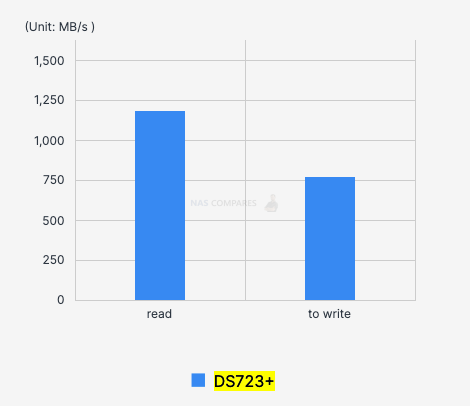
| model | DS723+ |
| read | 1,180.10 |
| to write | 771.84 |
SMB 1GbE – Windows File Transfer (using HDD)

| model | DS723+ | DS220+ | DS223 | DS218play | DS220j | DS118 | DS120j |
|
download for windows
|
86.54 | 86.79 | 80.18 | 82.5 | 81.85 | 83.39 | 67.35 |
|
Windows upload
|
79.21 | 77.23 | 67.49 | 68.56 | 68.28 | 69.26 | 46.51 |
1GbE Web Server – Nginx PHP Response Performance (using HDD)
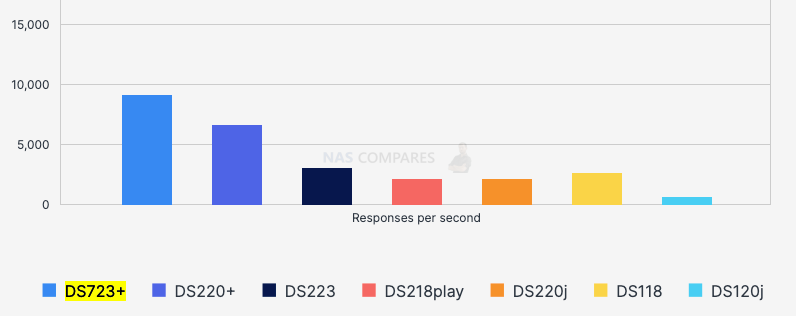
| model | DS723+ | DS220+ | DS223 | DS218play | DS220j | DS118 | DS120j |
|
Responses per second
|
9,131.47 | 6,683.60 | 3,064.45 | 2,120.55 | 2,167.36 | 2,623.93 | 626.21 |
DS723+ HDD compatibility
Synology drives (Toshiba) have been tested up to 18TB capacity.
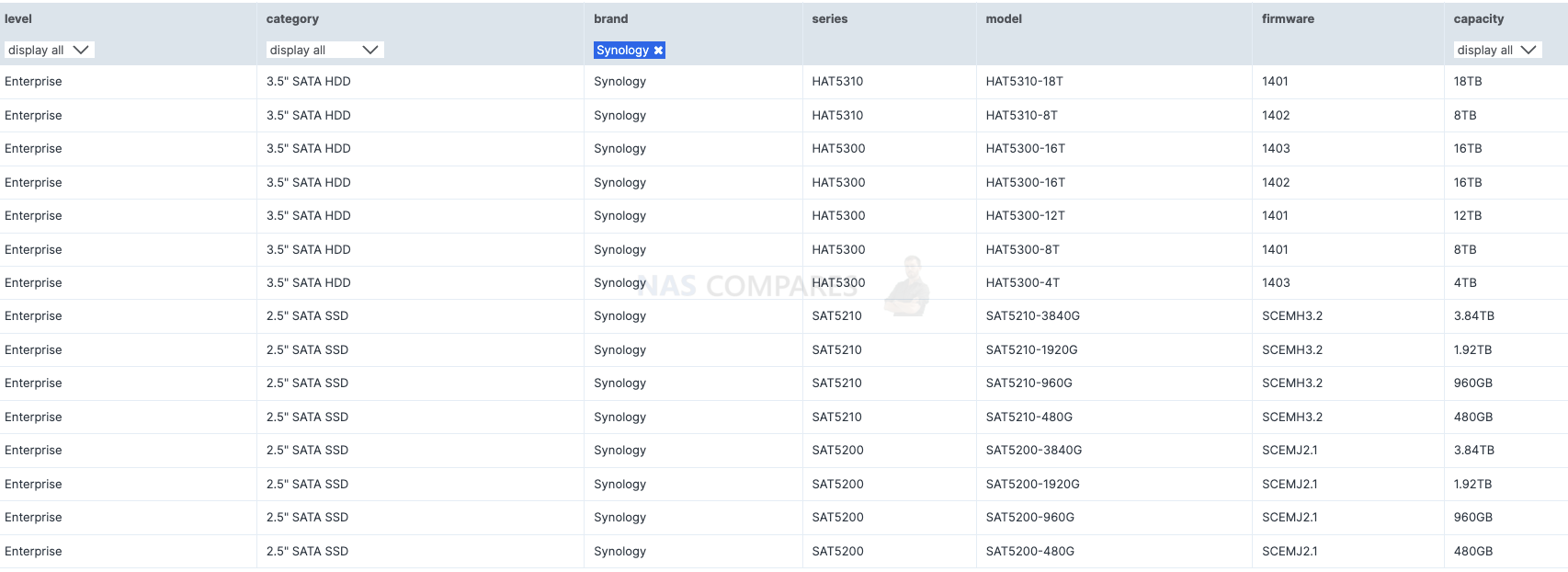
Compatible WD drives
WD drives have been tested only up to 14TB capacity. Only Red plus and Purple drives have been tested so far.
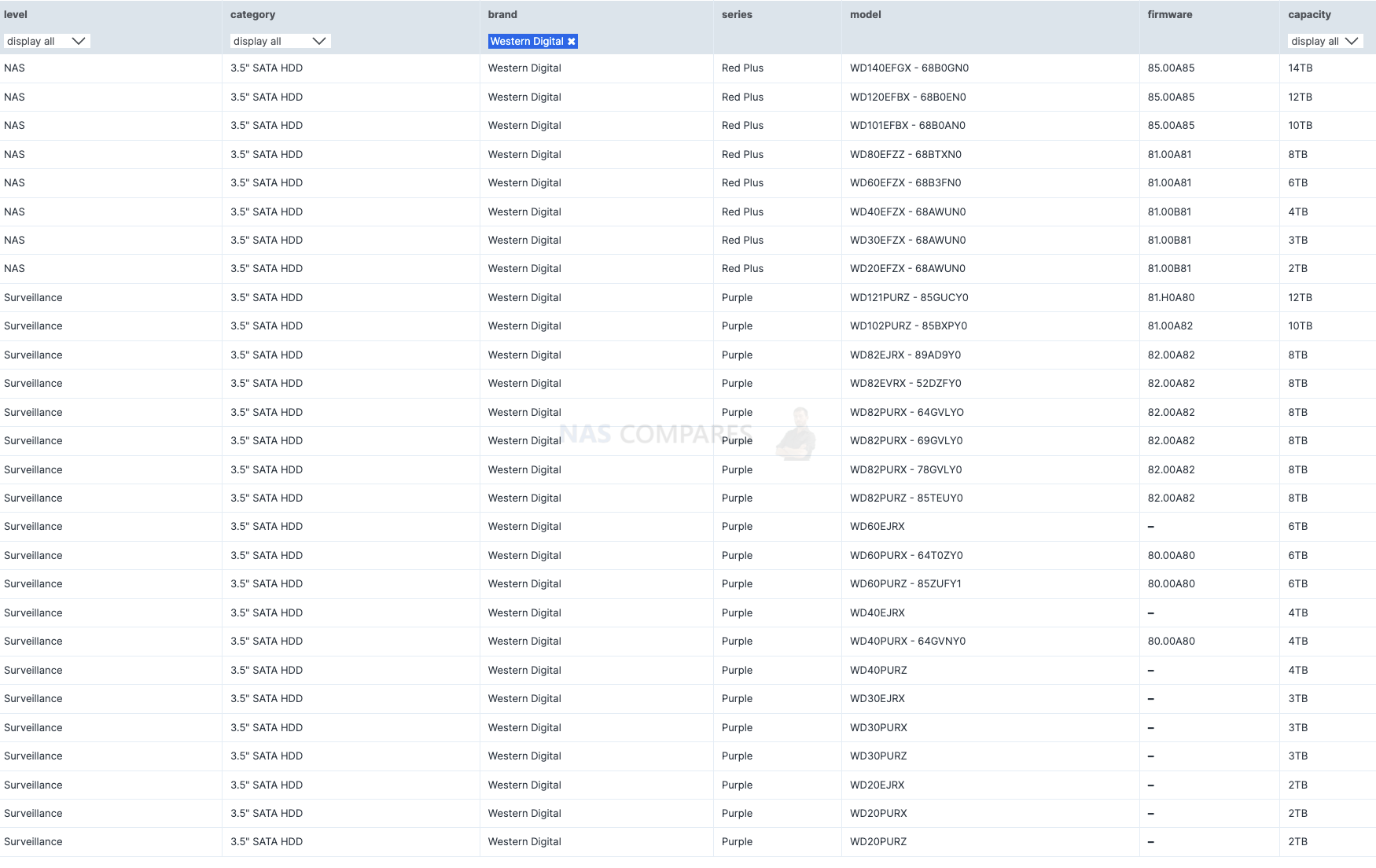
Compatible Seagate drives
Seagate drives have been tested up to a capacity of 12TB. This included Skyhawk and Ironwolf drives.
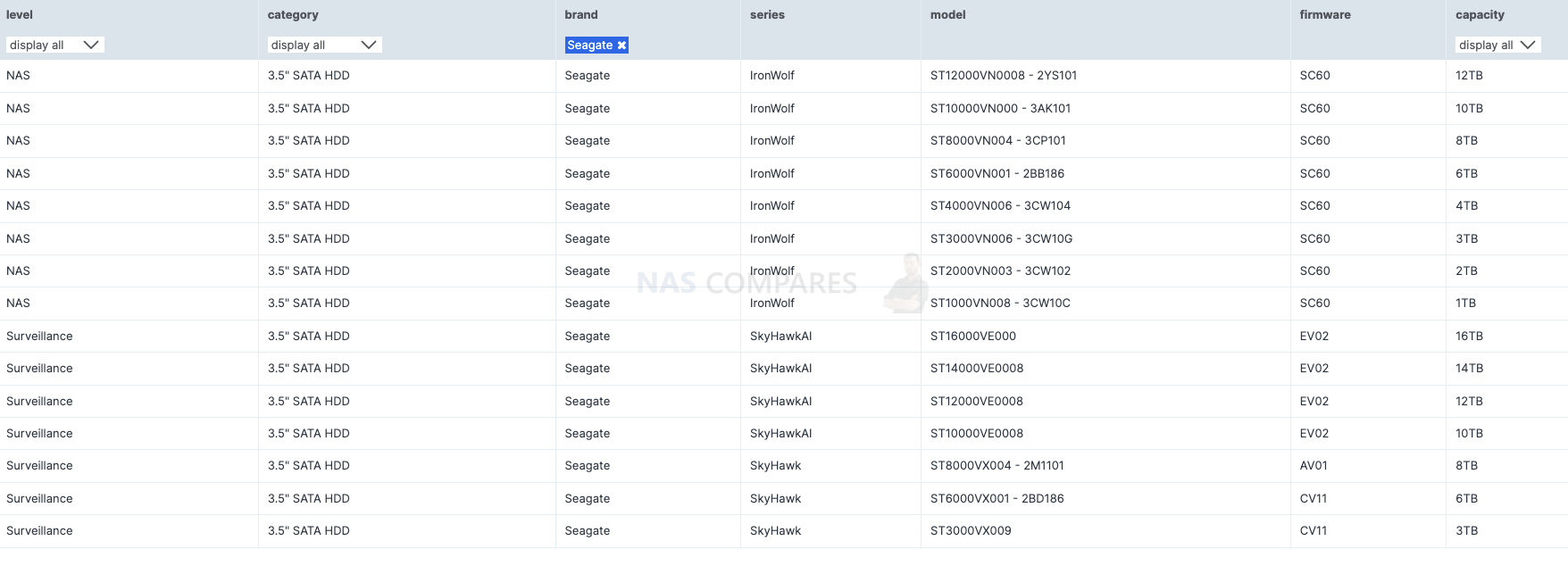
Can I use drives (HDD/ SSD) that are not on their list.
Yes, Synology have promised that Plus and Value series NAS such as this will have no software lock on drives that they have not tested and added to the list. There might be a warning message that drives are not from the list though. Their support level might change based on this.
Conclusion
Overall, there are big changes on the Synology flagship model. You get ECC memory that is very useful for web servers, VMs, and overall stability. Additionally, you also get NVMe with improved speeds up to 2GB/s, which can be used for caching or storage (good for video editors). However, currently, there is no permission to install DSM on NVMe.
The lack of a GPU chip is disappointing, but perhaps the DS223+ will have transcoding capabilities. If not, the recently-released DS223 has a Realtek CPU and can handle 4K using the Synology app. Plex will only allow 4K locally.
Lastly, there is a 10GbE upgrade option. This will allow people to use a 2-bay NAS to edit 4K videos, or for faster file backups. In business environments, 10GbE connections will allow more people to access their data faster, as they no longer need to share a 1GbE lane.
| Where to Buy a Product | |||
|
|
    
|

|
VISIT RETAILER ➤ |
 |
    
|

|
VISIT RETAILER ➤ |
We use affiliate links on the blog allowing NAScompares information and advice service to be free of charge to you. Anything you purchase on the day you click on our links will generate a small commission which is used to run the website. Here is a link for Amazon and B&H. You can also get me a ☕ Ko-fi or old school Paypal. Thanks! To find out more about how to support this advice service check HERE
What IS the Digiera OmniCore NAS? Is it Worth $599?
New UGREEN NAS Expansion, DXP4800 PRO NAS and eGPU Revealed
Gl.iNet Flint 4 10G+2.5G Router Revealed @CES 2026
EVERYTHING NEW from Minisforum @ CES 2026
Gl.iNet Slate 7 PRO Travel Router (and Beryl 7) REVEALED
Minisforum N5 MAX NAS - 16C/32T, 128GB 8000MT RAM, 5xSATA, 5x M.2, 2x10GbE and MORE
Access content via Patreon or KO-FI
Discover more from NAS Compares
Subscribe to get the latest posts sent to your email.


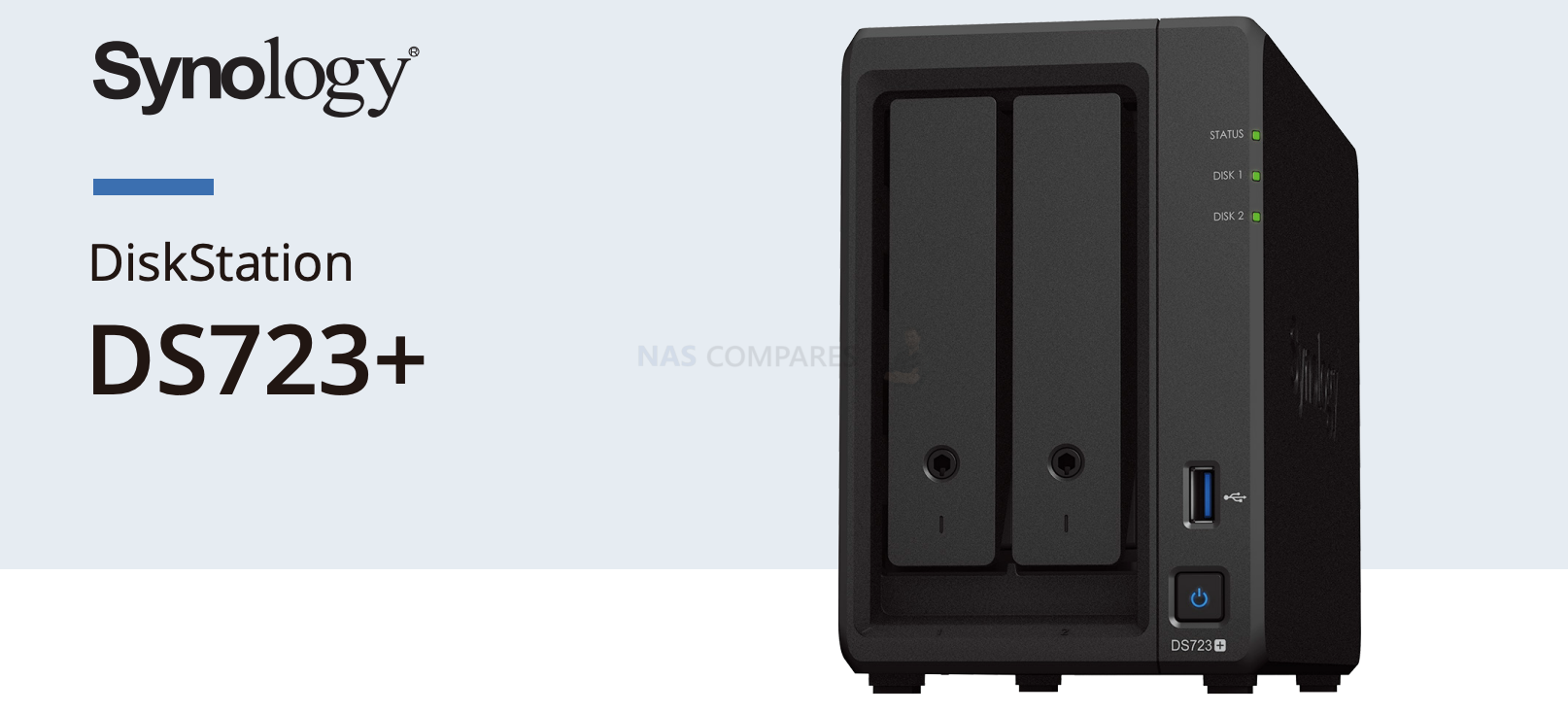



You talked too much, Please show your audience more about its functionality or the inside or the new features or how you use it.
REPLY ON YOUTUBE
Cant wait to get one on the cheap to use as a torrent server ????
REPLY ON YOUTUBE
Here for the pictures of Nas, staying for DS723+ review
REPLY ON YOUTUBE
This unit is such a Disappointment! I was so excited to upgrade my DS214Play with this unit. Then everything about it became an absolute disappointment. For the past 15 years I’ve used two different Synology units the same way. Main unit for storage and an external eSATA enclosure for backup (single version). That way at any point in time I had an NTFS copy of everything.
They decided to lock down this unit and the eSATA port is only for Synology to use. It is not usable by the user. That leaves only one USB port. Gees! Even my DS214Play had 4 usable ports on it! Further more the USB port is slower than eSATA. So this unit is a downgrade in that regard. Now add the fact that the dual NVMe slots cannot be used as storage space unless you way over spend on Synology owned drives. Ok, so I’ll use that for cache. NOPE! It’s not cache. It’s some useless smart cache that is only used for frequently read or written files. Completely unlike literally every single cache found on any raid array controller which does both that and acts as real write cache. Then onto the last disappointment. I’m using newer 6TB Seagate Exos Enterprise drives with this unit. Very fast drives. With the 10Gb adapter installed I expected to get a good 500MB transfer speed. NOPE! Starts out at 500 then quickly drops to around 140. Why? This makes no sense. That drive gets over 300 from drive to drive in a PC over a 6Gbps connection. Should be the same over 10Gb. I borrowed a QNAP NAS from someone and set that up. An entire 20GB file transfer saw an average 480MBps (with cache). Yet the DS723+ only averages 218MBps (with useless cache).
Such absolutely pointless decisions on their part. Ah well. I should have held off longer and waited for a USB 4 storage option as this unit is a complete and utter disappointment!
REPLY ON YOUTUBE
Seems that synology still isn’t serving a high end consumer 2 bay for all the plex people. Need to find out what the best is cause i think 99% of the people interested in this have that as the primary use. Seems dumb to not have a cpu good enough to do the hevc transcoding.
REPLY ON YOUTUBE
I so remember when Illmatic hit in the 90s. I was i college. Legend. What’s wrong with 99 Problems. Still a nasty beat and a great song. As for Jay v. Nas. I like em both but Ether was nasty. Bodied him on that one.
REPLY ON YOUTUBE
How does the DS720+ compare to the DS723+?
REPLY ON YOUTUBE
you are missing an important point at 27:40
they dont need to increase the price to add 10Gbe network ports, they actually spend extra money so you DONT HAVE 10Gbe ports by default.
The CPU in this NAS and in all new Synology units natively supports 2x 10Gbe.
All they need to do is wire it to ports and thats it.
They spend extra money to add a 2x 1Gbe NIC which the CPU does not support but that extra money is well spend for them because that way they can sell you an overpriced 10Gbe NIC afterwards.
This needs to be said in every single video about any new Synology NAS as this is extremely anti consumer
REPLY ON YOUTUBE
Been lurking for quite some time while our google photos storage fill ups. Gonna be a first time buyer and interested in this model. Is it overkill for automated backup from two phones for photos and maybe security camera back up as well?
REPLY ON YOUTUBE
Looks like Synology just wants to capture users in their DSM walled garden, then gouge them for their overpriced, inferior proprietary hardware. No thanks.
REPLY ON YOUTUBE
@NASCOMPARES I would be interested in seeing the 923+ against competitors that sports an AMD processor to see how they compared with file IO. I suspect they would be close, and I wonder what the price differential would be?
REPLY ON YOUTUBE
It’s the same shit like ds923+ for home users. Also the expensive Synology rebransed componenrs (ssd, ram, 10gbpe)
REPLY ON YOUTUBE
I understand that Synology have to hit an appropriate price point with their 2023 NAS devices, but for the same price one can buy a considerably more powerful QNAP. I would like to have a NAS with Synology software and more powerful hardware. I would be happy to pay more for that. Unfortunately, Synology don’t seem to offer this in their latest hardware.
REPLY ON YOUTUBE
Wow. Synology DS723+ is a collection of avoidable annoyances to leave buyers hesitant and dissatisfied. Could have been great. Could have been acceptable. But, instead, is unnecessarily disappointing.
REPLY ON YOUTUBE
You never mentioned power consumption (i dont think?). When compared to the ds720, which is best on purely power usage over a 24/7 period? I am looking at a 2 bay solely to run my ip cameras 24/7. My 1821 would do everything else. So I’m happy to get the 723 (as the newer unit) if power consumption between the two is negligible.
REPLY ON YOUTUBE
Thks & DS223+ or ?bust? (fingers-crossed 😉
REPLY ON YOUTUBE
I found it funny you had the 10Gbs OPTION as a big positive, then you were pissed off at the end it wasn’t standard. Love your vids mate, you are the real NAS master and I’m sure you’ll rate higher in google than that rapper in a couple of years! 🙂
REPLY ON YOUTUBE
Proprietary is a non-starter when it comes to storage
REPLY ON YOUTUBE
**Help Needed**
I have several Apple products and a big PC. I have several 1-2 TB hard drives full of over a decades work.
I’m about to start a business that will be 4k video (1080HD) and picture heavy for media presence.
I took out a 3tb Drop Box account but hate the Drop Box interface and have been flirting with the idea of buying a NAS system; 2 x 4 Tb’s to start with.
Was looking at Synology 2 bay. Could not decide between the 20+ or the other model (around £175). Deciee to wait for the new 2 bay with USB C etc.. but it seems that’s been a bit of a blow out.
What is the best path forward? I don’t want to be too complicated. I just want to store all my stuff in once place and be able to access it across platforms (Mac/PC) and move on with my life, instead of having drawers small HD’s and an annoying drop box that I’m near filling up anyway.
REPLY ON YOUTUBE
Glad I Grabbed a 720+!
REPLY ON YOUTUBE
So glad I purchased the DS920+ and will be using this until its end of service life…then goodbye Synology, hello QNAP
REPLY ON YOUTUBE
QNAP allows using EdgeTPU on the m2 slot. Does 723+ offer such a possibility?
REPLY ON YOUTUBE
You wasted 3 minutes of my life with the artsy-fartsy intro. Stick to what you do best.
REPLY ON YOUTUBE
I love you man your the white noise for my bad time.
REPLY ON YOUTUBE
I bought DS923+ a month ago as a replacement for my aging DS414 and couldn’t be happier with it. All I need is a fast and reliable file server. With 10GbE add on card I can access the volumes as if they are internal PC drives. And I work in VFX business so I’m hitting my NAS hard all day. Couldn’t care less about the plex (which is fine with H264). I don’t understand what the fuss is all about. This is NOT a product for home users wanting a media server. This is a fast business file server. And it just works. Set it and forget it. And what all that QNAP OS crap I wouldn’t touch it if they were free.
REPLY ON YOUTUBE
Synology lost me when their removed their USB DAC/Speaker Out functionality. That was really the only reason why I stayed with Synology because it functioned as a beautiful control for my hifi and streaming. It was all so nicely seamless. Removal of this feature basically freed me from Synology. I no longer have to stick with it and accept all those limitations described in the video. The world opened up.
REPLY ON YOUTUBE
I have returned my 1522+, the value is not there.
I did prepared 32 gb ddr4 Kingston (2×16 Gb), with 2 x 1Tb Samsung 980, for pool storage, 4 x 8 TB Seagate and 1 x 16 Tb Toshiba.
After setup I’ve received a notification about my ddr4, then for my pool M.2 drives,
then even for my Seagate 8 Tb HDD’s, that all are not compatible.
Nas was working but like this – no thank you.
There is no value for it, at least for me.
REPLY ON YOUTUBE
I need more breakdowns of Rob compared to other hip hop artists circa late 90s to late 2000s.
REPLY ON YOUTUBE
Proprietary stinks
REPLY ON YOUTUBE
Only:
1 GbE ports!
1 USB port and only 5Gb
2 Gb memory
Only Synology NVMe disks
No PLEX support
It’s a joke!
DS723+ should have been named “DS723- – -“ and priced much lower
REPLY ON YOUTUBE
NAS is an alien to me. I would like to build my home photo server. Based on my reading, Synology has the friendliest server & client apps for this feature. Is that right?
REPLY ON YOUTUBE
With every new device Synology release, I get more glad I bought a DS920+
REPLY ON YOUTUBE
Will not buy Synology. So dumb.
REPLY ON YOUTUBE
I only have one thing to say, 32GB of ECC Synology memory costs more than the Nas itself.
REPLY ON YOUTUBE
Think they have shot themselves in the foot, this one is not for me!
REPLY ON YOUTUBE
Synology , artificially hobbled this drive, and that’s not good business for their customers…
REPLY ON YOUTUBE
Great intro ????
REPLY ON YOUTUBE
As a home user I wasn’t “a little bit disappointed” with the CPU I just ruled it out instantly, same with the 923+. Also as home user have 2.5 let alone 10Gbe is an irrelevance as is ECC. I play Plex and I view photos and store the off files. I don’t use mobile so everything I play is at home, through the latest Apple TV+ 4k so in practice the 723+ will work fine as the Apple TV+ handles everything but it’s still a show stopper for me…because for me its a step backwards. However, I still watch videos from you like this as they are so informative. Keep it up
REPLY ON YOUTUBE
Sounds pretty low compared to QNAP 253 and Lockerstor Gen2 Drive, Very disappointing
REPLY ON YOUTUBE
Had so much hope for better video capability. My use case is primarily video storage but without transcoding, that heavy lifting is done by Apple TV.
I’m on an ancient DS214Play and figure the DS723+ will represent a big improvement in performance right?
Yes, DS723+ will come with significant performance boost.
It is true, that you probably do not need transcoding for local streaming only. If you do need remote streaming, this NAS can handle 1080p transcodes.